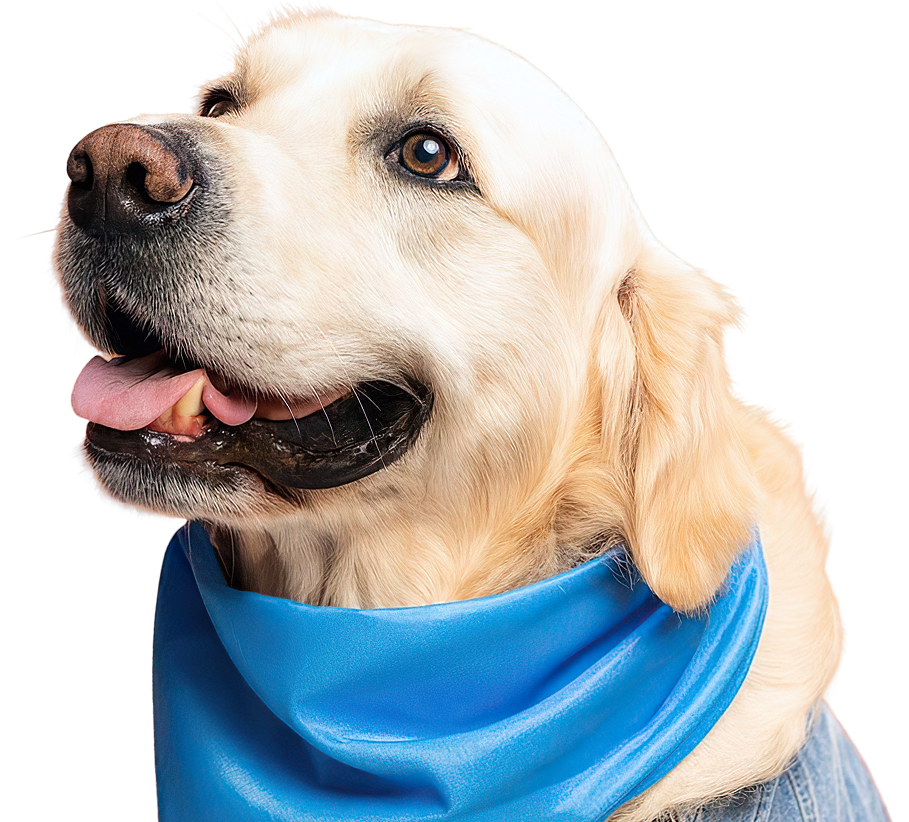Ever Wondered If Your Dog Understands What You're Saying?
.jpg)
The Secret Language Between You and Your Dog
Have you ever felt like your dog understands more than they should? That unmistakable reaction when you say "walk" or the way they run to the door when you say "let's go" Turns out, your instincts might be right. Research shows that some dogs can comprehend up to 165 human words. In extraordinary cases, that number can exceed 200. But how exactly does this work? And how can we use this knowledge to improve communication with our pets?
Understanding a dog’s language doesn’t mean expecting them to talk to us. It means learning to observe, interpret, and communicate clearly, respecting how they receive and process information. Let’s dive into the fascinating world of canine cognition, explore the science behind their language abilities, and uncover how words can become bridges of connection.
Beyond "Sit" and "Stay": The Power of Consistency
When we say dogs can understand up to 165 words, we’re not just talking about basic commands. Dogs can associate words with objects, actions, feelings, and even social contexts. The key lies in consistent repetition, positive reinforcement, and most importantly, tone of voice.
For instance, if you always say "walk" before putting on the leash and heading out, your dog will quickly learn that the word means something exciting is about to happen. The same applies to words like "water," "food," or favorite toy names. The trick is to use the same terms, in the same context, with the same tone.
Tone of voice is a vital part of the equation. Dogs don’t just recognize words, they pick up on emotional intonation. A single word spoken in anger versus affection can provoke completely different reactions. Studies show that dogs use the left side of the brain, the same side humans use to process language, to decode words. They use the right side to interpret tone. In other words, they not only hear what we say, but also how we say it.
How Dogs Learn Words
Dogs learn words through association. When a word is repeated many times in connection with a specific action, object, or situation, dogs begin to form a cognitive link. This is known as associative learning. It’s the same principle we use to train commands like "sit" or "stay," but expanded into a much wider vocabulary.
The more enriched a dog’s environment, the greater their learning potential. Dogs exposed to varied stimuli from puppyhood, like different toys, routines, people, and animals, tend to build a broader vocabulary. They’re also more likely to learn new words as they age. This highlights the importance of keeping their minds active and stimulated.
Some dogs have even learned the names of dozens of different toys. The most famous case is Chaser, a Border Collie trained to recognize over 1,000 words. That included the names of 1,022 toys, plus complex verbal commands like "fetch" or "bring" tied to each item. This was achieved through daily training sessions and a highly dedicated owner. It shows the remarkable potential many dogs have, even on a smaller scale.
Communication Is a Two-Way Street
If dogs can understand so much of what we say, then we should also learn to understand them. Canine communication is more physical and sensory than verbal. A wagging tail doesn’t always mean happiness. Full-body context matters. Ears pulled back, low posture, wide eyes, all of it communicates something.
To build effective communication, pet parents need to speak and observe. By noticing the signals your dog gives, you can adjust your approach, correct misunderstandings, and strengthen your bond. When a dog responds well to a word or command, positive reinforcement, whether treats, affection, or an enthusiastic tone, helps lock in that learning.
How to Use Words More Effectively
The good news is, you don’t need to be a professional trainer to teach your dog more words. With small tweaks in your daily routine, you can start expanding their vocabulary and improving your relationship:
- Use consistent words for everyday activities: "eat," "bath," "walk," "bed."
- Name favorite toys or objects and use those names during play.
- Link words to emotions or reactions: "calm," "slow," "good."
- Avoid using too many variations for the same thing. For example, "come here" vs. "come on" vs. "come." This can confuse your dog.
- Always match your tone to the meaning of the word.
By using verbal language in a strategic and emotionally tuned way, dogs don’t just learn vocabulary. They learn to trust what you’re communicating.
How Zibbly Can Help
At Zibbly, we believe that caring for your dog is about more than just food and walks. It’s about building real connection and providing the right kind of stimulation at every life stage. That’s why our app helps pet parents log key words used daily and track their dog’s reactions over time.
As you notice how your dog responds to certain commands or phrases, Zibbly can suggest ways to reinforce learning, introduce new words, or adapt training for dogs with special needs, like seniors with hearing loss. All of this is based on your dog’s real data, personalized to their breed, age, lifestyle, and personality.
You can also monitor your dog’s vocabulary progress over time, see which commands get the most consistent response, and discover fun ways to make learning stick. Interactive toys, memory games, or personalized positive reinforcement tips can all make a big difference.
Language as an Act of Love
Knowing that dogs can understand up to 165 words changes how we relate to them. We move from being caregivers giving orders, to being partners co-creating a shared language. Every word your dog learns becomes a bridge between two different worlds, joined by affection and intention.
When we speak to our dogs, they’re not just hearing. They’re trying to understand, participate, and connect. And when we manage to communicate clearly, consistently, and respectfully, our daily life together becomes more harmonious, secure, and joyful.
Curious to know which words make the most sense to your dog? Or how to grow their vocabulary in a way that’s fun and personalized? Visit Zibbly’s website to explore exclusive tools that help transform the way you and your dog communicate.
Because talking to your dog isn’t just about teaching commands. It’s about learning how to truly connect with them.









